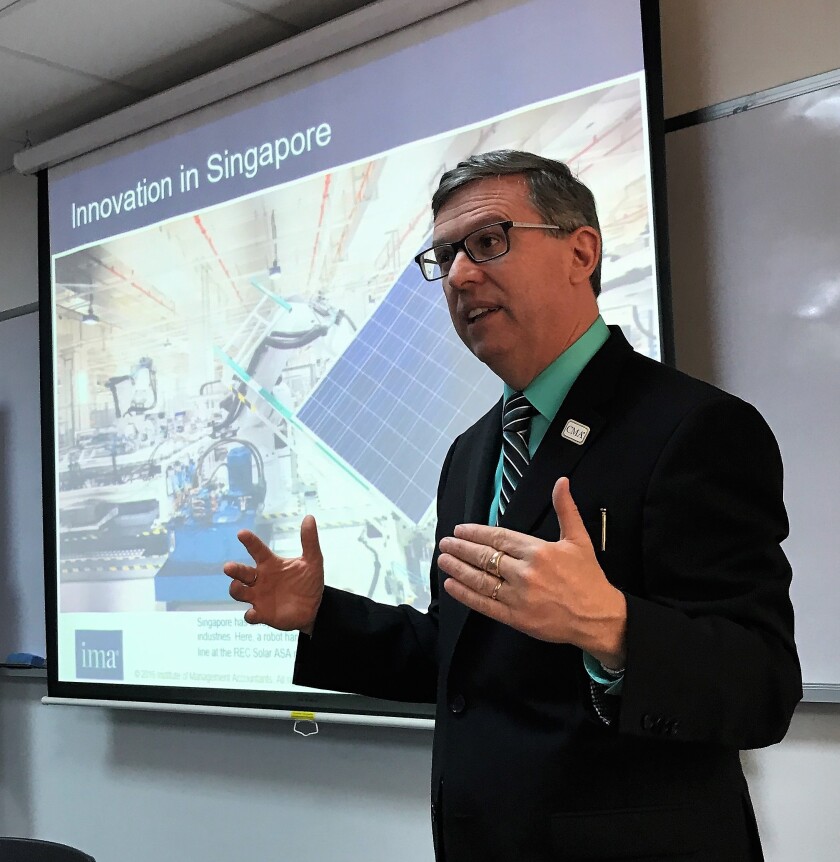The Small Business Administration has taken a step toward automatic forgiveness of Paycheck Protection Program loans — but it wasn’t as big a step as bankers were hoping for.
The SBA and the Treasury Department, which are administering the PPP, unveiled a streamlined forgiveness application for borrowers with loans of $50,000 or less. The one-page application requires borrowers to calculate the amount of forgiveness they are seeking and provide five certifications attesting that their calculations are accurate, they have submitted appropriate documentation and funds were used for authorized purposes.
Lenders’ loan review responsibility is confined to confirming receipt of the application and accompanying documentation.

The SBA and Treasury introduced the streamlined application as part of an interim final rule. The rule also exempts borrowers with loans of $50,000 or less from program provisions that reduce the amount of forgiveness for businesses that laid off employees.
According to the SBA and Treasury, there are about 3.57 million outstanding PPP loans of $50,000 or less, totaling $62 billion. Those loans equal 69% of all PPP loans but represent just 12% of the program's overall dollar volume. More than 1.7 million of those smaller loans went to businesses that had no employees other than the owner.
Trade groups for banks and credit unions have lobbied hard for simplified forgiveness. They showed no inclination of abandoning their efforts after the SBA's announcement late Thursday.
Consumer Bankers Association President and CEO Richard Hunt called the streamlined application a move in the right direction, but he said it didn’t exempt enough borrowers and was still too complicated.
“This newest process still requires a significant investment of time and resources from small-business owners, resources which could be better spent paying their employees and supporting local economies,” Hunt said in a press release.
“While we appreciate SBA and Treasury attempting to streamline the forgiveness process, it is apparent congressional action is needed for the true streamlined forgiveness mom-and-pop businesses need,” Hunt added.
President Donald Trump signed a bill containing $900 billion in pandemic relief, the White House said, triggering the flow of aid to individuals and businesses and averting the risk of a partial government shutdown on Tuesday.
Lawmakers across the political spectrum urged President Donald Trump to sign the $900 billion coronavirus stimulus bill passed with bipartisan support last week, as millions of Americans face a loss in benefits.
The Institute of Management Accountants reported record growth in 2020 despite the impact of the COVID-19 pandemic on the accounting profession.
Dan Berger, president and CEO at the National Association of Federally Insured Credit Unions, was somewhat more complimentary, calling the new application “a strong step in the right direction” in a press release. Like Hunt, however, Berger said his organization would continue lobbying.
While the Independent Community Bankers of America is "pleased" with the simplified application, Rebeca Romero Rainey, the association's CEO, said "more relief is needed to support the nation's small businesses."
The NAFCU, CBA, ICBA and several other trade associations representing PPP lenders and borrowers are backing legislation that would provide automatic forgiveness for borrowers with loans up to $150,000. Supporters also include the American Bankers Association and Independent Community Bankers of America.
"We don’t have a lot of $50,000 loans," said Todd Nagel, CEO of IncredibleBank in Wausau, Wis. "I wish it would have been $150,000 and less that would take care of 80% forgiveness."
Still, some bankers touted the move.
“The new form is much simpler and will be easier for customers to complete since they do not have to do calculations,” said Dan Sullivan, business banking group manager at NexTier Bank in Kittanning, Pa. About two-thirds of NexTier's PPP loans were for less than $50,000.
“We appreciate the effort … to streamline the process,” Sullivan added. “At the same time, we remain hopeful that automatic forgiveness for loans under $150,000 will be approved.”no
Sullivan said the SBA has approved 38 of the 146 forgiveness applications submitted by NexTier, adding that the bank has received notification that many of those are being paid out. “We expect the process to move along more quickly as the SBA reaches full stride,” he said.
A spokesman for Bank of America, which made more PPP loans than any other lender, said Thursday that it had begun receiving decisions on some of the forgiveness applications it has submitted.
SBA launched its forgiveness portal Aug. 10. It has received tens of thousands of applications from banks, but it only began responding with forgiveness decisions and remitting payments to lenders Oct. 2, an SBA spokesperson said Wednesday.
Rep. Blaine Luetkemeyer, R-Mo., called the interim final rule “a good step," but said he would continue pushing for expanded forgiveness.
“My congressional colleagues and I are pursuing even greater relief and calling for a simple, streamlined forgiveness process for PPP loans up to $150,000, which represents 87% of all PPP recipients,” Luetkemeyer said Thursday in a press release. “I look forward to working with [Treasury] Secretary [Steven] Mnuchin in the coming days and weeks to achieve that goal.”
Authorized as part of a record $2.2 trillion stimulus package Congress enacted March 27, the PPP's goal was supporting employment during the early months of the coronavirus pandemic, when much of the economy was shuttered.
SBA released the initial forgiveness application May 15. Lenders and borrowers alike criticized the 11-page form as lengthy and burdensome, especially for the smallest borrowers, who typically don’t have lawyers, accountants and other consultants on whom they can rely for assistance.
The agency released a streamlined “EZ” forgiveness application in June, following passage of the Paycheck Protection Program Flexibility Act, but it failed to quiet criticism of the process.
Paul Davis contributed to this report.





